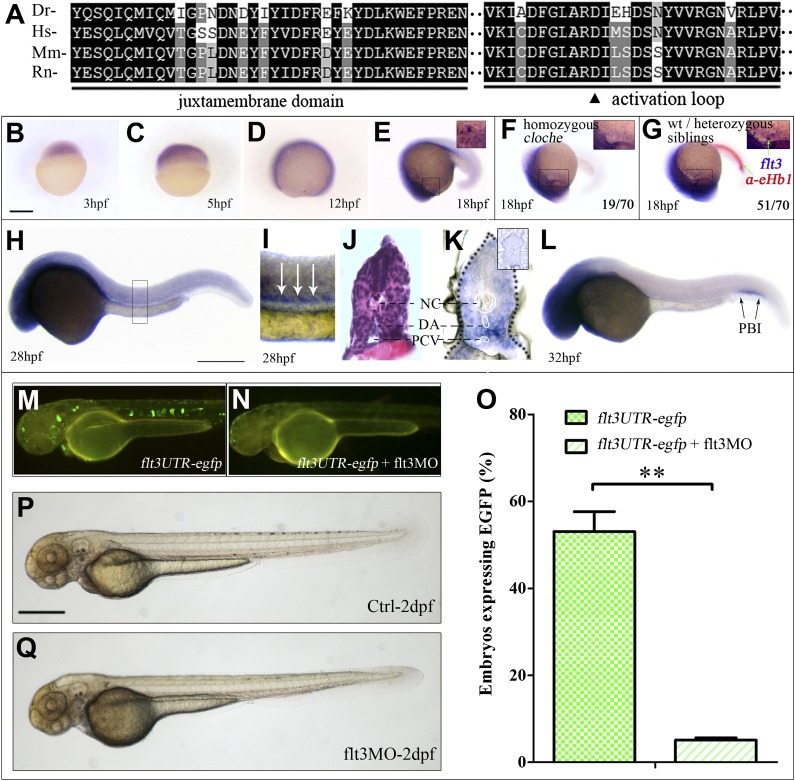Figure 1.
Conservation, expression, and knockdown of zebrafish flt3. (A) Multiple sequence alignment showing the conservation of JMD and the activation loop within the TKD in FLT3 from zebrafish (Dr, Danio rerio), human (Hs, Homo sapiens), mouse (Mm, Mus musculus), and rat (Rn, Rattus norvegicus). (B-E) WISH showing the spatial expression of flt3 at 3 (B), 5 (C), 12 (D), and 18 (E) hpf. (F-G) Double ISH (flt3 in blue; α-eHb1 in red) showing flt3 expression in the homozygous cloche mutant (F) and WT and heterozygous siblings (G) at 18 hpf. Inset, A higher magnification of region in the anterior yolk sac as defined by the rectangle. (H-K) WISH (H-I) and paraffin sectioning (J-K) showing flt3 expression at 28 hpf. Sectioning on the flt3 sense probe ISH embryos (inset) was used as negative control. (L) ISH showing flt3 expression in the PBI at 32 hpf. (M-O) The egfp expression in flt3UTR-egfp injected (M) and flt3UTR-egfp + flt3MO coinjected (N) embryos at 2 dpf, respectively. Comparison of the percentage (O) of embryos showing the egfp expression with or without the coinjection of flt3MO. (P-Q) General morphology of uninjected control (P) and flt3MO (Q) embryos at 2 dpf. Triangle in panel A indicates the human FLT3 D835 residue; the arrows in panel I indicate the flt3 expression in the midline of the embryos; the arrows in panel L indicated the flt3 expression in the PBI. Scale bars represent 500 μm. ISH, in situ hybridization; NC, notochord; PCV, posterior cardinal vein.

